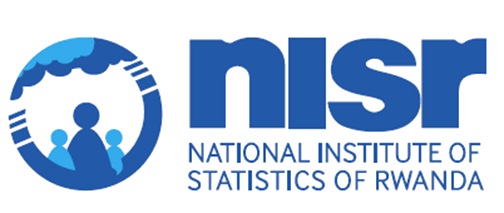The national poverty rate declined significantly from an estimated 39.8% in 2017 to 27.4% in 2024.
This represents a reduction of 12.4 percentage points suggesting substantial progress in poverty alleviation over the seven-year period.
In count terms, approximately 1.5 million Rwandans came out poverty in the last 7 years between 2017 and 2024, averaging 214,000 individuals emerging from poverty each year.
As far as social protection is concerned, The EICV provides information about population groups seen as potentially vulnerable, such as the young, elderly, disabled, orphaned, and female-headed households.
The VUP survey data revealed that the number of VUP beneficiaries is around 410,000. While males make up 47.9% of the total population, but only 26% of VUP beneficiaries, indicating a higher proportion of female beneficiaries (74%). The largest share of VUP beneficiaries is under the NSDS program (28.8%), followed by Direct Support (22.7%), and Classic Public Works (22.5%). While the national poverty rate is 27.4%, the poverty rate among VUP beneficiaries is 40.5%.
TABLE: Credits, Savings and Transfers in Rwanda
| Indicator | RHHS 2019/2020 | ||
Percentage (%) of households with credit, currently or in last 12 months prior to the survey interview | HH currently hasoutstanding loan(s) | 54.7 | |
| HH borrowed in last 12 months - all repaid | 17.5 | ||
| No loan-did notrequest | 26.7 | ||
| Requested loan-refused | 1.1 | ||
Percentage (%) of households with credit from various sources | Commercial Bank | 4.8 | |
| Borrowed fromrelative | 53.1 | ||
| Credit cooperative | 3.5 | ||
| Tontine | 53.4 | ||
| Informal lenders | 5.5 | ||
| Microfinance | 2.4 | ||
| VUP financial serviceLoan | 1.6 | ||
| Ubudehe loan | 0.6 | ||
| SACCOs | 6.3 | ||
| Employer loan | 0.5 | ||
| Other | 2.7 | ||
| Percentage (%) ofpopulation aged 18+ yearswith a bankaccount, and by sex | All Rwanda | 33.3 | |
| Sex | Male | 41.1 | |
| Female | 26.7 | ||
Percentage (%) of households with at leastone person having a bank account |
All Rwanda |
58.9 | |
Percentage (%) of households sending transfers to another household, by transfer type | % of households sending transfers to another household | 92.8 | |
| Types of sent transfer | Cash | 51.2 | |
| Food | 92.4 | ||
| Other in-kind | 60.3 | ||
Percentage (%) of households receiving transfers fromanother household | % of households receiving transfers from another household | 95.4 | |
Types of received transfer | Cash | 61.0 | |
| Food | 93.6 | ||
| Other in-kind | 63.4 | ||
The largest share of VUP beneficiaries is under the NSDS program (28.8%), followed by Direct Support (22.7%), and Classic Public Works (22.5%). While the national poverty rate is 27.4%, the poverty rate among VUP beneficiaries is 40.5%.
